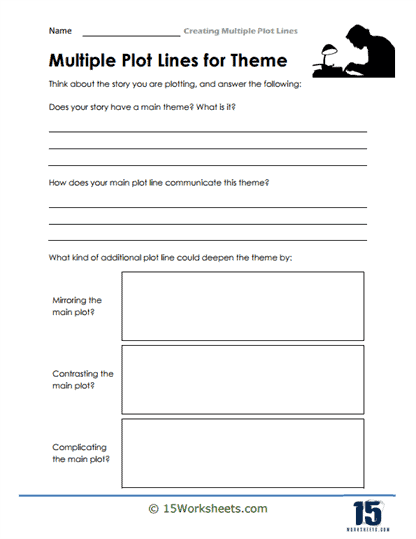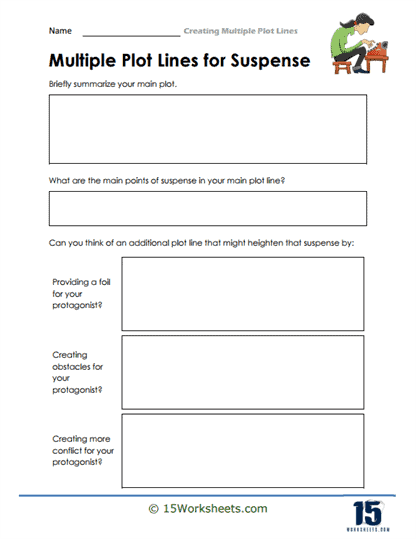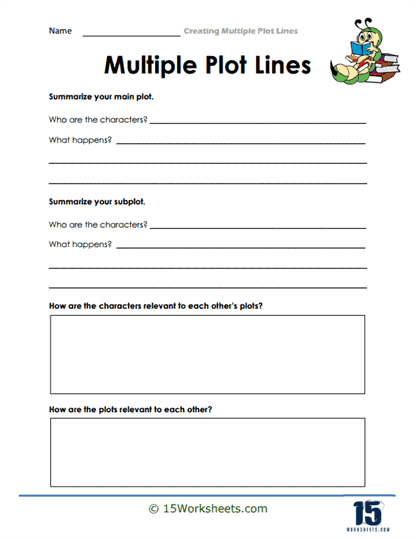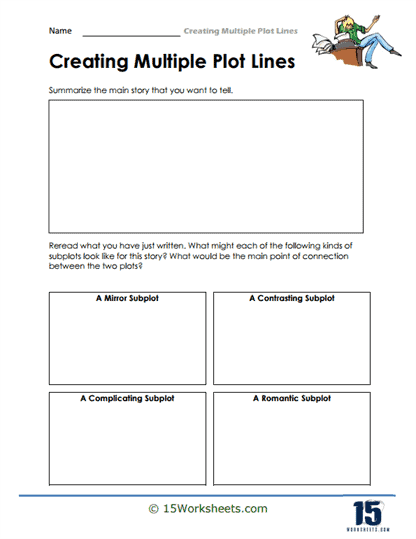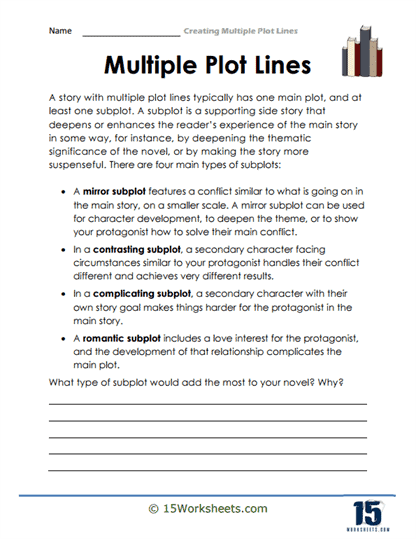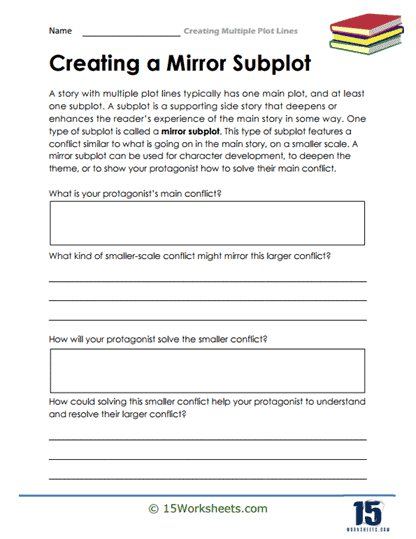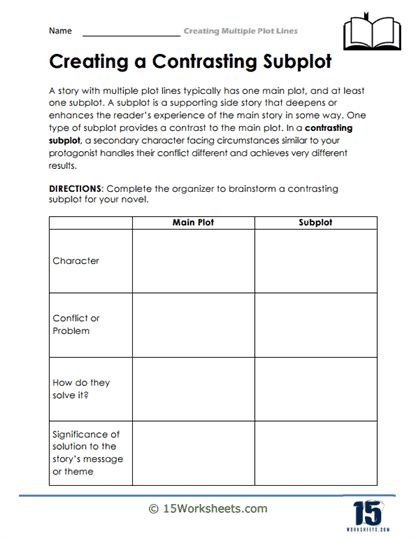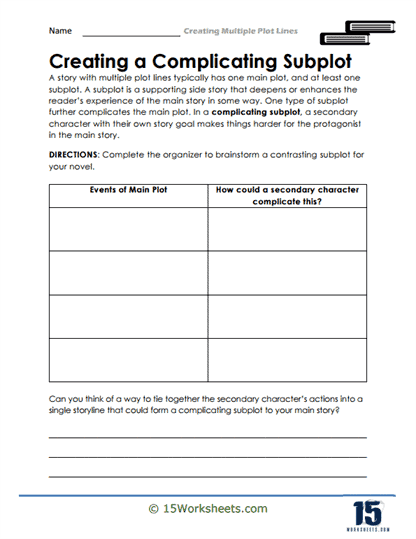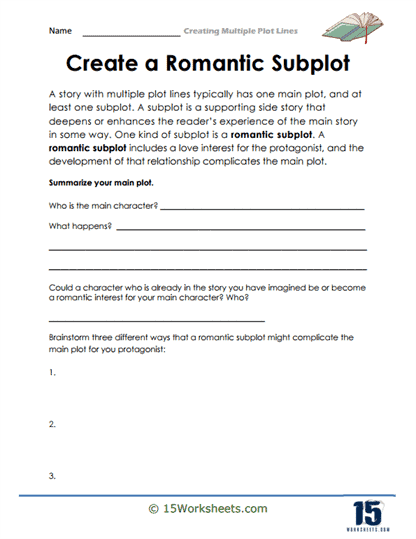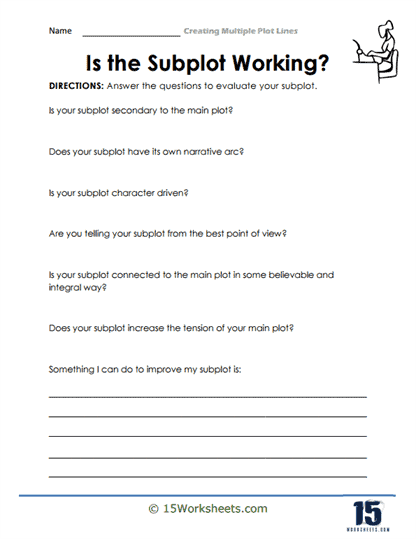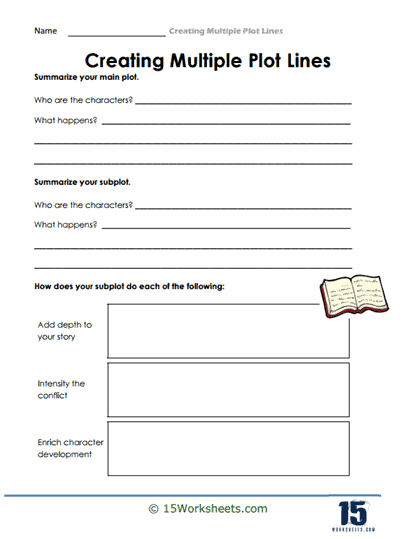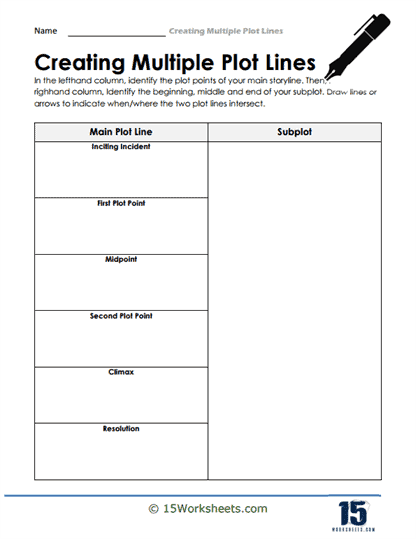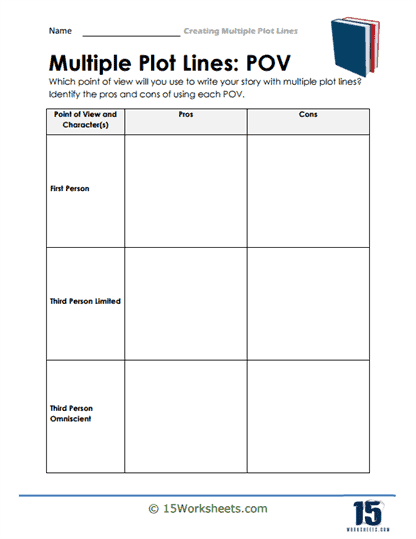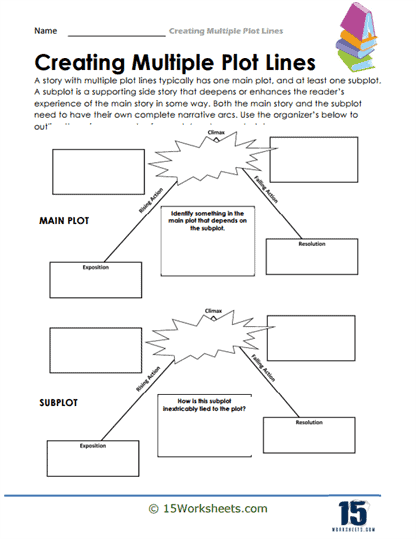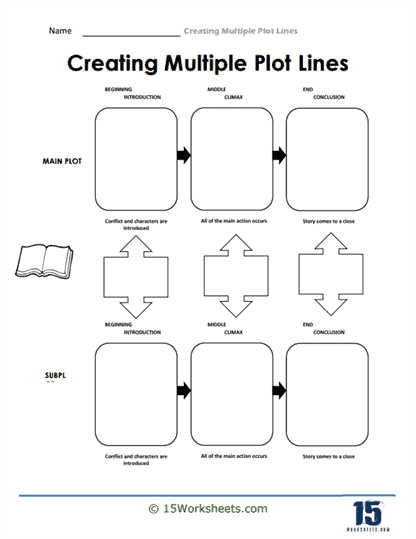Multiple Plot Lines Worksheets
All About These 15 Worksheets
This series of 15 worksheets is an exciting and innovative resource designed to inspire students to explore the dynamic world of storytelling with multiple plot lines. These worksheets provide students with a structured framework to develop complex narratives that interweave multiple storylines, creating rich and captivating storytelling experiences.
The exercises encourage students to think beyond linear storytelling and embrace the depth and complexity that multiple plot lines can bring to their writing. Each worksheet offers a step-by-step approach that nurtures creativity, critical thinking, and effective writing skills. Through these worksheets, students will:
- Understand how branching plot lines can mirror, contrast, or complicate the main plot;
- Appreciate how characters can interact and intersect with each other through multiple plot lines;
- Explore the relationships between characters and their respective plotlines, allowing for complex character development and interplay;
- Learn all about mirror subplots, contrasting subplots, complicating subplots, and romantic subplots, and create their own of each;
- Thoroughly evaluate their own created subplots;
- And use visual plot mapping tools to help them outline and structure their multiple plot lines.
Overall, this series provides an opportunity for students to unleash their creativity and delve into the art of crafting intricate and compelling narratives. These worksheets are suitable for various grade levels and can be integrated into language arts classes, creative writing workshops, or independent writing projects.
By using these Multiple Plot Lines worksheets, teachers empower their students to think imaginatively, explore narrative complexity, and develop advanced storytelling skills. They learn to navigate multiple storylines, manage character arcs, and create engaging narratives that captivate readers with their depth and intricacy. This series invites students to embark on an exciting journey of creativity, enabling them to master the art of crafting multifaceted stories that leave a lasting impact.
Why Do Authors Use Multiple Plot Lines?
As any fiction reader knows, stories often have more than one plot line. The protagonist might be trying to save the world from destruction while also trying to figure out their romantic feelings for their best friend. While this can make for a complex and interesting story, it begs the question: why do authors use multiple plot lines?
Explore Different Facets of Human Experience
First, it allows the author to explore different facets of the human experience. In a single story, the author can explore love, loss, betrayal, hope, etc. By having multiple plot lines, the author can delve deeper into these emotions and explore them from different angles.
Keep Your Story Engaging
Second, it keeps the reader engaged. If a story only had one plot line, it might get boring after a while. Having multiple plot lines gives the reader something else to focus on if they start to lose interest in one particular plot.
Helps in Introducing Different Characters
Third, it allows the author to introduce different characters. If all the characters were focused on one plot line, getting to know them all would be difficult. The author can introduce different characters by having multiple plot lines and give the reader a chance to get to know them better.
Add Suspense to the Tale
Fourth, it adds suspense. If readers know what’s going to happen in one plot line, they might not be as interested in reading the story. Having multiple plot lines adds suspense because the reader doesn’t know what will happen next.
Gives Freedom to Be Creative
Fifth, it gives the author more freedom. With only one plot line, the author is restricted in what they can do. Having multiple plot lines allows the author to be more creative and explore different possibilities.
The Benefits of Having Multiple Plot Lines
Make Your Story More Interesting
If your story only has one plot line, it can be easy for readers to get bored. Multiple plot lines give readers more to think about and follow, making your story more engaging.
Add Complexity to Your Story
Multiple plot lines can make your story more complex and layered, which can be interesting for readers. It can also make your story feel more realistic because, in real life, people often have multiple things going on at once.
Give Your Story More Depth
With multiple plot lines, you have the opportunity to explore different aspects of your characters and their lives. This can make your story feel deeper and more well-developed.
Writing with multiple plot lines is essential for more than one reason. However, there are some challenges that the authors can face while dealing with multiple plot lines.
The Challenges
Confusing for Readers
If there are too many plot lines, or if they’re not connected, readers can get confused. This can make your story difficult to follow and frustrating to read.
Difficult to Juggle All the Plot Lines
As a writer, it can be challenging to keep track of multiple plot lines and make sure they’re all progressing satisfyingly. If you’re not careful, one plot line might take over the story or get lost in the shuffle.
Make Your Story Feel Disjointed
If the plot lines don’t mesh well together, your story can feel disjointed and unfocused. This can be off-putting for readers and make your story seem less cohesive.

